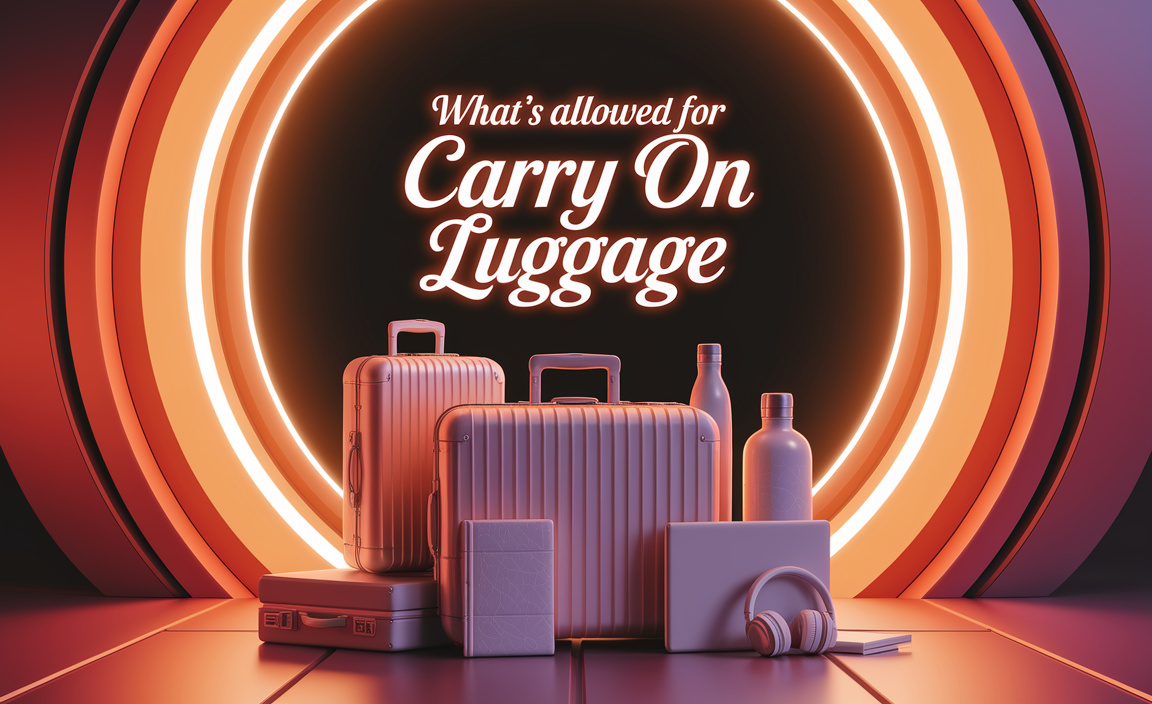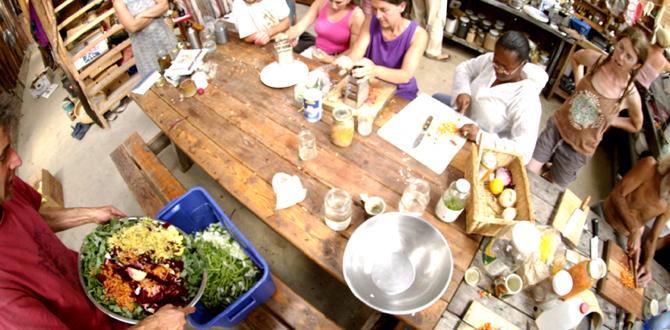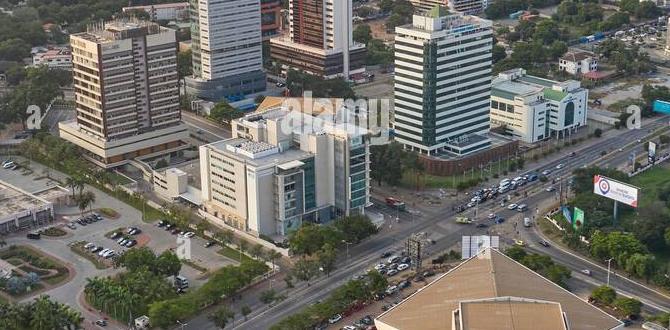Making Bavaria Accessible: Your Essential Tips for a Comfortable and Enjoyable Trip
Planning a trip to Bavaria shouldn’t be stressful, even with accessibility needs. This guide offers straightforward tips to ensure your journey through stunning Bavarian landscapes and charming towns is smooth and enjoyable. We’ll cover everything from transportation and accommodation to attractions and essential planning to help you experience the best of Bavaria with confidence and ease.
Bavaria is a dream destination for many, filled with fairy-tale castles, rolling hills, and vibrant cities. However, for travelers with specific accessibility needs, planning can sometimes feel like a puzzle. Wondering about which places are friendly for wheelchairs, if public transport is easy to navigate, or where to find comfortable accommodations can add a layer of worry. But don’t let these concerns hold you back! This guide is here to help. We’ll break down essential tips in simple steps, making your Bavarian adventure not just possible, but wonderfully memorable. Get ready to explore Bavaria with peace of mind, knowing you’re well-prepared for a fantastic journey.
Planning Your Accessible Bavarian Adventure
A little preparation goes a long way in ensuring a seamless and enjoyable trip to Bavaria. Focusing on accessibility from the outset means you can relax and soak in the beauty of this incredible region.
Understanding Accessibility in Bavaria
Bavaria, like much of Germany, is actively working to improve accessibility. While progress is ongoing, many key attractions, public transport systems, and newer accommodations are designed with accessibility in mind. Older historical sites might present more challenges, but often, creative solutions or dedicated assistance are available. It’s always best to research specific locations you plan to visit.
Key Considerations for Accessible Travel:
Transportation: Germany’s “Deutsche Bahn” (DB) train network is often a good option, with many stations offering step-free access and assistance services. Local buses and trams also vary in accessibility.
Accommodation: Look for hotels that explicitly state they have accessible rooms. Websites and booking platforms often have filters for this.
Attractions: Iconic castles and historical buildings can be tricky. Check their official websites for detailed accessibility information, including accessible routes, lifts, or guided tours designed for visitors with disabilities.
Documentation: Keeping important medical information and contact numbers handy is always wise.
Essential Pre-Trip Checklist
Before you even pack your bags, a few crucial planning steps can make a world of difference.
- Research Specific Destinations: Don’t just plan for “Bavaria”; plan for Munich, Neuschwanstein Castle, the Bavarian Alps, etc. Each has unique accessibility features.
- Book Accessible Accommodation: Secure rooms that meet your needs well in advance, especially during peak season.
- Plan Transportation: Investigate accessible train routes, airport transfers, and local public transport options for each city you’ll visit.
- Check Attraction Accessibility: Visit the official websites of major sights. Look for “barrier-free,” “accessible,” or “barrierefrei” information.
- Contact Providers: Don’t hesitate to call hotels, train stations, or tourist information centers to confirm details or request assistance.
- Pack Smart: Include any personal care items you might need, like adult or child diapers, which can offer peace of mind for long journeys or unexpected situations. Comfortable clothing and sturdy footwear are also key.
- Travel Insurance: Ensure your policy covers any specific medical needs or potential issues.
- Inform Your Travel Companions: If traveling with family or friends, ensure they are aware of your needs and how they can best support you.
Navigating Bavaria: Transportation Tips
Getting around Bavaria with accessibility needs requires a bit of forethought, but the options are more varied and user-friendly than you might imagine.
Train Travel with Deutsche Bahn (DB)
Germany’s national railway, Deutsche Bahn (DB), is a primary mode of transport and generally strives to be accessible.
Booking Assistance: DB offers a mobility service (Mobilitätsservice-Zentrale) that you can contact in advance to arrange assistance at stations, boarding, and alighting trains. It’s highly recommended to book this at least 48 hours prior to your journey. You can find more information on their official website.
Station Accessibility: Many major stations are equipped with lifts, ramps, and accessible toilets. However, smaller stations might have more limitations. Always check the specific station’s accessibility details on the DB website.
Onboard Accessibility: Newer trains often have designated spaces for wheelchairs and accessible toilets. Older trains might be less equipped, so planning your route with newer rolling stock is beneficial.
Accessible Public Transport in Cities
Major Bavarian cities like Munich have invested significantly in accessible public transport.
Munich (MVG): Munich’s public transport (U-Bahn, S-Bahn, trams, buses) is increasingly accessible. Many U-Bahn stations have lifts, and most buses and trams are low-floor. The MVG (Münchner Verkehrsgesellschaft) provides information on accessible routes and stations.
Other Cities: Nuremberg, Augsburg, and other larger cities generally have good accessibility on their public transport networks. Smaller towns may rely more on buses, which are typically more accessible than historical tram systems.
Car Rentals and Taxis
Renting a car can offer maximum flexibility, although accessible vehicle rentals might require specific booking well in advance. Taxis are available in most cities, and some companies may offer specialized accessible vehicles upon request. Pre-booking these is crucial.
Accommodation for Every Need
Finding a comfortable and accessible place to stay is fundamental to a stress-free trip. Bavaria offers a range of options, from modern hotels to well-adapted guesthouses.
Types of Accessible Accommodation
Accessible Hotels: Many hotels, especially larger chains or newer establishments, offer rooms specifically designed for guests with disabilities. These typically include wider doorways, grab bars in bathrooms, roll-in showers, and accessible beds.
Holiday Apartments (Ferienwohnungen): While variable, some modern apartments can be quite accessible. Look for ground-floor options or those with lift access. Communication with the host is key here.
Guesthouses (Pensionen): These can be more of a lottery. Older buildings might present challenges, but some have been renovated. Always inquire directly about specific features.
What to Look For in Accessible Accommodation:
Step-Free Entrance: No steps at the main entrance, or a ramp is available.
Lift Access: If on an upper floor, a working lift is essential.
Accessible Room Features:
Wide doorways (at least 80 cm).
Sufficient maneuverability space for wheelchairs.
Grab bars near the toilet and in the shower.
Roll-in shower or a bathtub with accessible transfer clearance.
Lowered sinks and counter spaces.
Accessible light switches and controls.
On-site Facilities: Accessible breakfast areas or restaurants, and accessible common areas.
Booking Tips:
Use Filters: Most online booking platforms (e.g., Booking.com, Expedia) have filters for accessibility features.
Call Directly: After finding a potential hotel, call them to discuss your specific needs. Sometimes, features aren’t listed online but are available.
Read Reviews: Look for reviews from other travelers with accessibility needs.
Confirm Details: Double-check everything you discuss is what you expect upon arrival.
Accessible Attractions in Bavaria
Bavaria is rich with historical wonders and natural beauty. Here’s how to approach some of its most famous sights with accessibility in mind.
Castles and Palaces
Bavaria is famed for its castles, but accessibility can be a challenge due to their historical nature.
Neuschwanstein Castle: This iconic castle is one of the most challenging. The path to the castle is steep, and only certain parts of the interior are accessible. Tours are typically guided and involve many stairs. Visitors may be able to access the Marienbrücke (bridge) for photos, but this can be crowded and is limited. Information on accessibility can be found on the official official tourism site.
Linderhof Palace: This smaller palace is generally more accessible than Neuschwanstein. Parts of the palace are accessible on the ground floor, and its beautiful gardens are also easier to navigate.
Residenz Munich: Munich’s Royal Palace offers a much better accessibility experience. Lifts are available to access many of the opulent rooms, and accessible restrooms are provided.
Nymphenburg Palace: The ground floor of the main palace is accessible, as are parts of the park.
Museums and Galleries
Many museums in Bavaria are well-equipped for visitors with disabilities.
Deutsches Museum, Munich: This world-renowned science and technology museum is largely accessible, featuring lifts, ramps, and accessible restrooms.
Alte Pinakothek, Neue Pinakothek, Pinakothek der Moderne (Munich): These major art museums generally offer good accessibility, with lifts and accessible facilities.
Bavarian National Museum (Munich): Offers accessible entrances and lifts to most exhibition areas.
Natural Wonders and Outdoor Activities
The Bavarian Alps and charming lakes offer stunning scenery.
Zugspitze (Germany’s Highest Peak): Accessibility varies by the chosen route. The cogwheel train from Garmisch-Partenkirchen is often accessible, providing access to certain viewing platforms. The cable car from Eibsee is also generally accessible. Check the specific operator’s details.
Lake Starnberg and Lake Chiemsee: Boat tours on these lakes are typically accessible, offering scenic views without strenuous activity. Many lakefront areas have paved pathways.
Bavarian Parks: Larger city parks like the Olympiapark in Munich or Hofgarten are usually well-paved and offer easy exploration.
General Tips for Visiting Attractions:
Check Websites: Always look for an “accessibility” or “barrier-free” section on the official website.
Call Ahead: If unsure, contact the attraction directly to discuss your needs and what accommodations they can provide.
Consider Guided Tours: Some attractions offer specialized tours for visitors with mobility issues or sensory needs.
Patience is Key: Especially at historical sites, there might be uneven surfaces or non-ideal passages. Be prepared for a slower pace and potential assistance.
Table: Sample Accessibility Ratings for Bavarian Attractions
This table provides a general overview. Always verify with the attraction directly for the most current information.
| Attraction | Location | General Accessibility Level | Notes |
|---|---|---|---|
| Neuschwanstein Castle | Schwangau | Challenging | Steep approach, limited interior access, many stairs. Pre-booking essential. |
| Residenz Munich | Munich | Good | Lifts available for most areas, accessible restrooms. |
| Deutsches Museum | Munich | Very Good | Lifts, ramps, accessible restrooms throughout. |
| Linderhof Palace | Ettal | Moderate | Ground floor of palace accessible, gardens easier to navigate. |
| Frauenkirche (Munich Cathedral) | Munich | Moderate | Ground level accessible, but can be crowded. Tower climb not accessible. |
| Olympiapark | Munich | Very Good | Paved paths, accessible facilities throughout the park. |
| Zugspitze (Cogwheel Train Route) | Garmisch-Partenkirchen | Good | Cogwheel train generally accessible, some viewing platforms are reachable. |
Essential Supplies for a Comfortable Trip
Traveling with specific needs means carrying a few extra items can drastically boost your comfort and confidence.
Personal Care Comforts
For travelers who use adult or child diapers, planning ahead ensures you have what you need for a smooth journey.
Sufficient Supply: Pack more than you think you’ll need. It’s always better to have extra than to run out, especially if access to specific brands or sizes is difficult while abroad.
Discreet Storage: Use travel bags or packing cubes to organize and discreetly store your supplies. Consider opaque tote bags for discreet transport.
Travel-Sized Wipes & Sanitizer: Keeping clean on the go is essential. Pack travel-sized packs of flushable wipes (check local disposal regulations) and hand sanitizer.
Disposal Bags: Bring biodegradable or opaque disposal bags for used products. Many public restrooms in Germany are well-equipped, but having your own discreet solution is reassuring.
Comfortable Clothing: Pack loose-fitting, breathable clothing. This is especially important when using absorbent products for maximum comfort and to prevent irritation. Natural fabrics like cotton are ideal.
Other Helpful Items:
Portable Charger (Power Bank): Essential for keeping your phone, GPS, or other devices charged, especially when out exploring all day.
Comfortable, Supportive Footwear: You’ll be doing a lot of exploring, even with mobility aids. Well-fitting shoes are non-negotiable.
Lightweight Rain Gear: Bavaria’s weather can be unpredictable. A packable waterproof jacket can save the day.
Medication Pouch: Keep all necessary medications, prescriptions, and a small first-aid kit organized and easily accessible.
Small Backpack or Crossbody Bag: For carrying essentials like water, snacks, wallet, phone, and personal care items during day trips.
Reusable Water Bottle: Stay hydrated. Many places to refill your bottle.
Small Travel Pillow: For added comfort on trains or flights.
Planning Your Bavarian Itinerary: A Sample Accessible Route
Creating a balanced itinerary that considers accessibility is key. Here’s a sample that focuses on ease and enjoyment.
Sample Itinerary: Munich & Bavarian Alps (5 Days)
This itinerary prioritizes accessible options and allows flexibility.
Day 1: Arrival in Munich & City Exploration
Morning: Arrive at Munich Airport (MUC). The airport is very accessible with lifts and accessible restrooms.
Transport: Use the S-Bahn (S1 or S8 lines) from the airport to the city center. These trains are generally accessible. Alternatively, book an accessible taxi or pre-arranged transfer.
Afternoon: Check into your accessible hotel in central Munich.
Activity: Explore the Marienplatz, the main square, which is flat and spacious. Watch the famous Glockenspiel show.
Activity: Visit the Frauenkirche (Munich Cathedral). The ground floor is accessible, offering a serene experience.
Evening: Enjoy a meal at an accessible restaurant in the city center.
Day 2: Munich’s Culture & History
Morning: Visit the Residenz Munich. The palace offers good accessibility with lifts to explore many of its historical rooms.
Afternoon: Explore the Deutsches Museum. This large museum is very accessible with ramps and lifts. Allocate ample time as it’s vast.
Evening: Enjoy a leisurely stroll or accessible boat ride on the Eisbach river wave viewing area in the Englischer Garten (English Garden) if weather permits.
Day 3: Day Trip to Neuschwanstein (with caveats) or Linderhof
Option 1: Neuschwanstein Castle (Requires careful planning and acceptance of limitations):
Transport: Take an accessible ICE or regional train from Munich to Füssen. From Füssen, take an accessible bus or pre-booked taxi to Hohenschwangau village.
Castle Visit: Understand that access is limited. You can take a shuttle bus (check accessibility) or walk up the hill to the castle. The interior tour involves stairs, but some areas might be viewable from platforms. Prioritize comfortable shoes and patience.
Option 2: Linderhof Palace (More accessible):
Transport: Train from Munich to Oberammergau, then a bus or taxi to Linderhof.
Palace Visit: The ground floor and gardens are more easily navigable.
Evening: Return to Munich.
Day 4: Bavarian Alps & Lakes (Accessible Options)
Morning: Travel to Starnberg or Chiemsee.
Transport: Accessible train to the lake towns.
Activity: Take an accessible boat tour on the lake. Enjoy the stunning Alpine scenery from the water. Many piers and boats are equipped for accessibility.
Afternoon: Explore lakeside promenades, which are usually flat and paved.
Evening: Return to Munich.
Day 5: Departure
Morning: Enjoy a final Bavarian breakfast. Depending on your flight schedule, perhaps a last visit to a favorite accessible spot or souvenir shopping.
* Transport: Take the S-Bahn back to Munich Airport.
Adapting the Itinerary
This is a template. Adjust it based on your energy levels, specific interests, and the accessibility features of your chosen accommodations and transport. Always confirm accessibility details for any specific activity or location before you go.
Frequently Asked Questions About Bavaria Accessible Travel
Here are some common questions travelers with accessibility needs might have.
Q1: Is Germany very accessible for wheelchair users?
A1: Germany, and Bavaria specifically, is making significant strides in accessibility. Major








